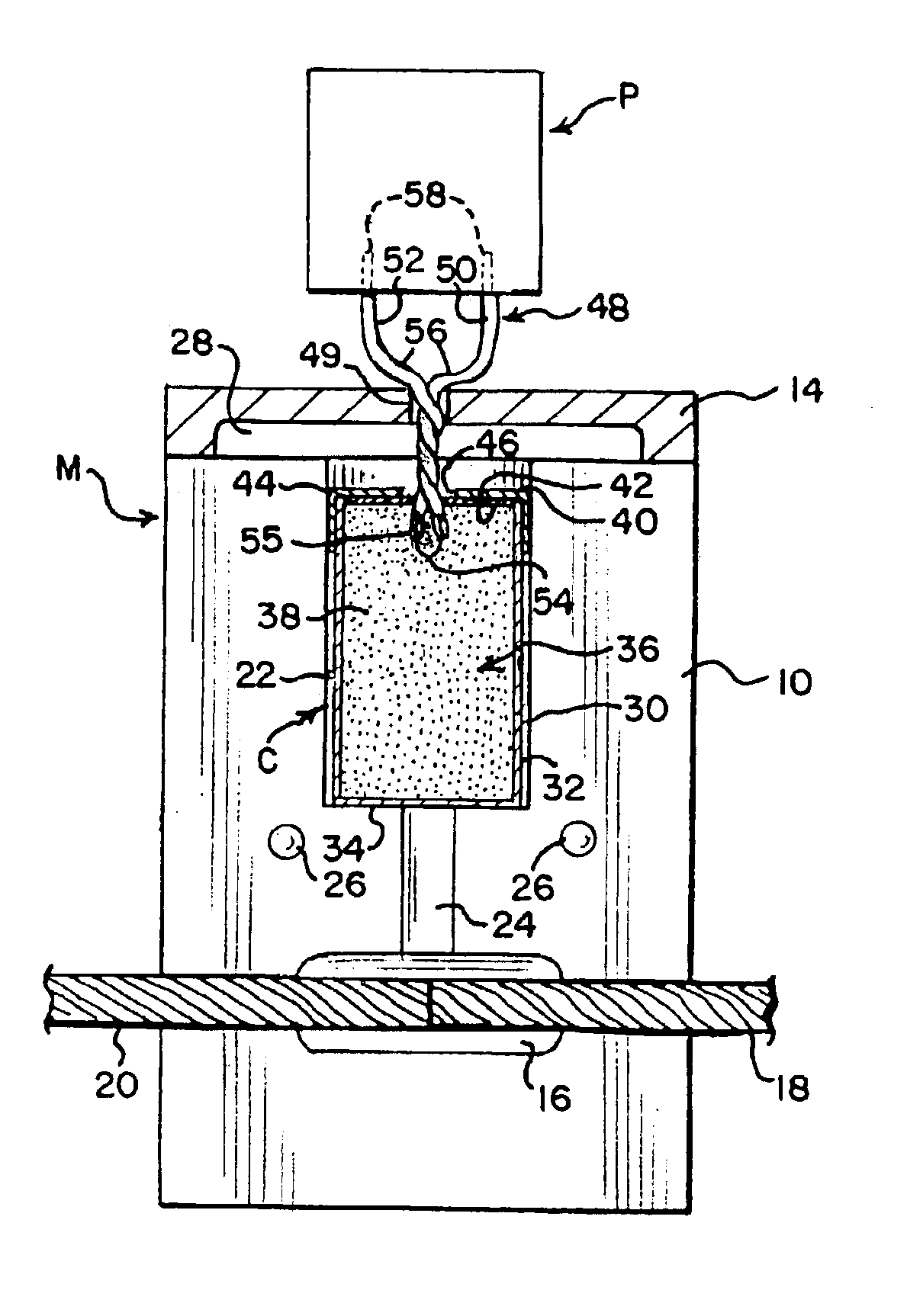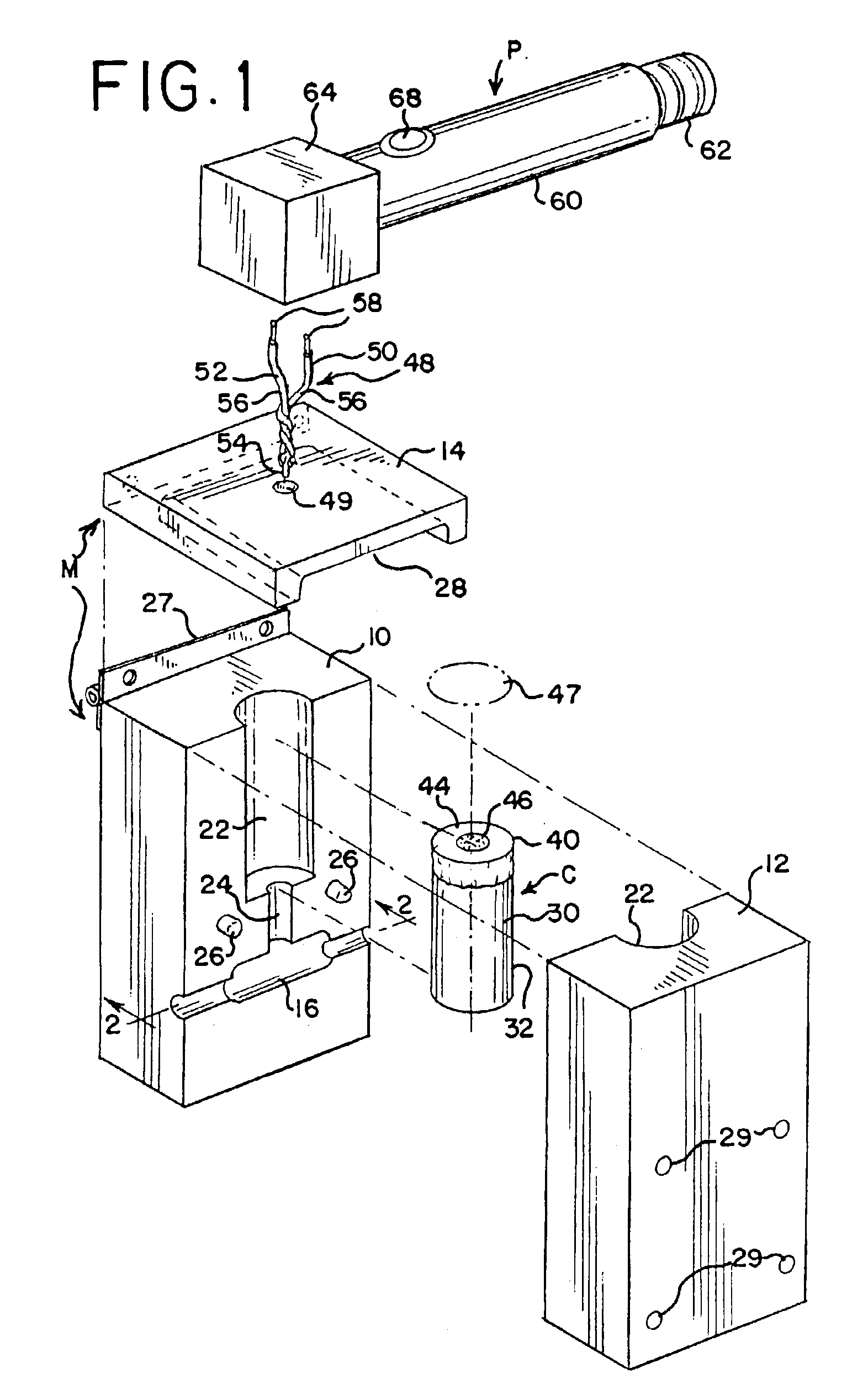Exothermic welding
a technology of exothermic welding and welding ring, which is applied in the direction of aluminum-thermic welding apparatus, manufacturing tools, other domestic objects, etc., can solve the problems of added expense involved in providing two grain sizes and packing, and the smokeless procedure which has been employed in the past has not attained the other desirable goals heretofore described, and achieves the effect of easy ignitable weld metal
- Summary
- Abstract
- Description
- Claims
- Application Information
AI Technical Summary
Benefits of technology
Problems solved by technology
Method used
Image
Examples
Embodiment Construction
[0026]With particular reference to FIGS. 1 and 2, a preferred embodiment of exothermic welding assembly of the invention and for practicing the method of the invention comprises a mold M formed of a suitable material, such as graphite, for withstanding the extremely high temperatures of the exothermic welding process. The mold M as typically employed in exothermic welding is comprised of two mold halves 10 and 12 and a cover 14 as shown in FIG. 1. Mold half 10 includes one half of a weld cavity 16 which, for example as shown in FIG. 2, receives two members, such as cables 18 and 20, to position the cables in a closely adjacent relationship to each other to be exothermically welded together in the weld cavity 16. Although the members 18 and 20 as shown in the drawings as the members to be welded together are two cables, the members may be plates, pipes, rebar, etc., and the weld cavity 16 may open to a face of the mold M to accommodate such other shapes for example as shown in U.S. P...
PUM
| Property | Measurement | Unit |
|---|---|---|
| Temperature | aaaaa | aaaaa |
| Length | aaaaa | aaaaa |
| Particle size | aaaaa | aaaaa |
Abstract
Description
Claims
Application Information
 Login to View More
Login to View More - R&D
- Intellectual Property
- Life Sciences
- Materials
- Tech Scout
- Unparalleled Data Quality
- Higher Quality Content
- 60% Fewer Hallucinations
Browse by: Latest US Patents, China's latest patents, Technical Efficacy Thesaurus, Application Domain, Technology Topic, Popular Technical Reports.
© 2025 PatSnap. All rights reserved.Legal|Privacy policy|Modern Slavery Act Transparency Statement|Sitemap|About US| Contact US: help@patsnap.com



